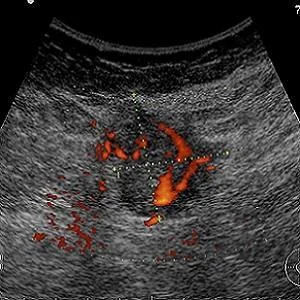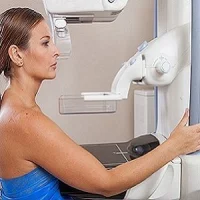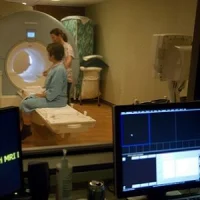A large study in Japan finds improved rates of detection for breast cancer in women when ultrasound was added to standard mammography tests in breast screening. In addition to accurately detecting more cases of breast cancer, the combo method increased detection rate of early cancers, according to the results published in The Lancet.
Early detection and treatment is critically important for reducing deaths from the disease, and many developed countries have implemented mammography screening programmes for the women who are most at risk. In Asia, breast cancer tends to present at an earlier age than in Europe or the US, and Asian women have denser breast tissue, both of which are known to reduce the accuracy of mammography. As such, detection using standard mammography screening based on European and U.S. practice might miss cases of breast cancer in Asian countries.
Prof. Noriaki Ohuchi, PhD, Tohoku University Graduate School of Medicine (Miyagi, Japan) and colleagues recruited more than 70,000 women in Japan aged between 40 and 49 to participate in the J-START trial. Half were offered the usual mammography screening (control group), and half were offered ultrasound testing in addition to mammography (intervention group), with two screening sessions taking place over two years. The research team reported these key findings:
The lower rate of interval cancers — which appear after a negative test result between scheduled rounds of screening — in the intervention group led researchers to conclude that adding ultrasound to mammography screening detected additional cancers, compared to mammography alone.
"Further work will now be needed to see if these results can be extended to other countries in Asia," says Prof. Ohuchi. "In addition, long-term follow-up of these results will determine whether including ultrasound tests in breast cancer screening ultimately affects the likelihood of successful treatment and survival, as we would expect."
In a linked Comment, Martin Yaffe, PhD, and Roberta Jong, MD, both from the University of Toronto, Canada, write, "We believe that J-START7 is an important trial for several reasons. It is the first randomised trial of population screening with ultrasonography, and was done in asymptomatic women at average risk, who were not preselected on the basis of other imaging findings...Furthermore, the J-START trial was done in relatively young women. Despite evidence of mammography screening effectively reducing mortality in women in their 40s, this method is seldom recommended or provided for women younger than 50 years. Definitive evidence of whether ultrasonography screening of women from age 40 years can further reduce breast cancer mortality could be an important step."
Source: The Lancet
Image credit: Flickr.com
Early detection and treatment is critically important for reducing deaths from the disease, and many developed countries have implemented mammography screening programmes for the women who are most at risk. In Asia, breast cancer tends to present at an earlier age than in Europe or the US, and Asian women have denser breast tissue, both of which are known to reduce the accuracy of mammography. As such, detection using standard mammography screening based on European and U.S. practice might miss cases of breast cancer in Asian countries.
Prof. Noriaki Ohuchi, PhD, Tohoku University Graduate School of Medicine (Miyagi, Japan) and colleagues recruited more than 70,000 women in Japan aged between 40 and 49 to participate in the J-START trial. Half were offered the usual mammography screening (control group), and half were offered ultrasound testing in addition to mammography (intervention group), with two screening sessions taking place over two years. The research team reported these key findings:
- Sensitivity, or correct identification of cancer, was significantly higher in the intervention group (91 percent) than in the control group (77 percent);
- More cancers were detected in the intervention group than in the control group (184 vs. 117) and were more frequently stage 0 and 1 (144 vs. 79);
- 18 interval cancers were detected in the intervention group compared with 35 in the control group.
The lower rate of interval cancers — which appear after a negative test result between scheduled rounds of screening — in the intervention group led researchers to conclude that adding ultrasound to mammography screening detected additional cancers, compared to mammography alone.
"Further work will now be needed to see if these results can be extended to other countries in Asia," says Prof. Ohuchi. "In addition, long-term follow-up of these results will determine whether including ultrasound tests in breast cancer screening ultimately affects the likelihood of successful treatment and survival, as we would expect."
In a linked Comment, Martin Yaffe, PhD, and Roberta Jong, MD, both from the University of Toronto, Canada, write, "We believe that J-START7 is an important trial for several reasons. It is the first randomised trial of population screening with ultrasonography, and was done in asymptomatic women at average risk, who were not preselected on the basis of other imaging findings...Furthermore, the J-START trial was done in relatively young women. Despite evidence of mammography screening effectively reducing mortality in women in their 40s, this method is seldom recommended or provided for women younger than 50 years. Definitive evidence of whether ultrasonography screening of women from age 40 years can further reduce breast cancer mortality could be an important step."
Source: The Lancet
Image credit: Flickr.com
References:
Ohuchi N et al. (2015) Sensitivity and specificity of mammography and adjunctive ultrasonography to screen for breast cancer in the Japan Strategic Anti-cancer Randomized Trial (J-START): a randomised controlled trial. The Lancet, published online 04 November 2015; DOI:
10.1016/S0140-6736(15)00774-6
Latest Articles
healthmanagement, breast cancer, dense breasts, early detection, mammography, ultrasound
A large study in Japan finds improved rates of detection for breast cancer in women when ultrasound was added to standard mammography tests in breast screening. In addition to accurately detecting more cases of breast cancer, the combo method increased de










